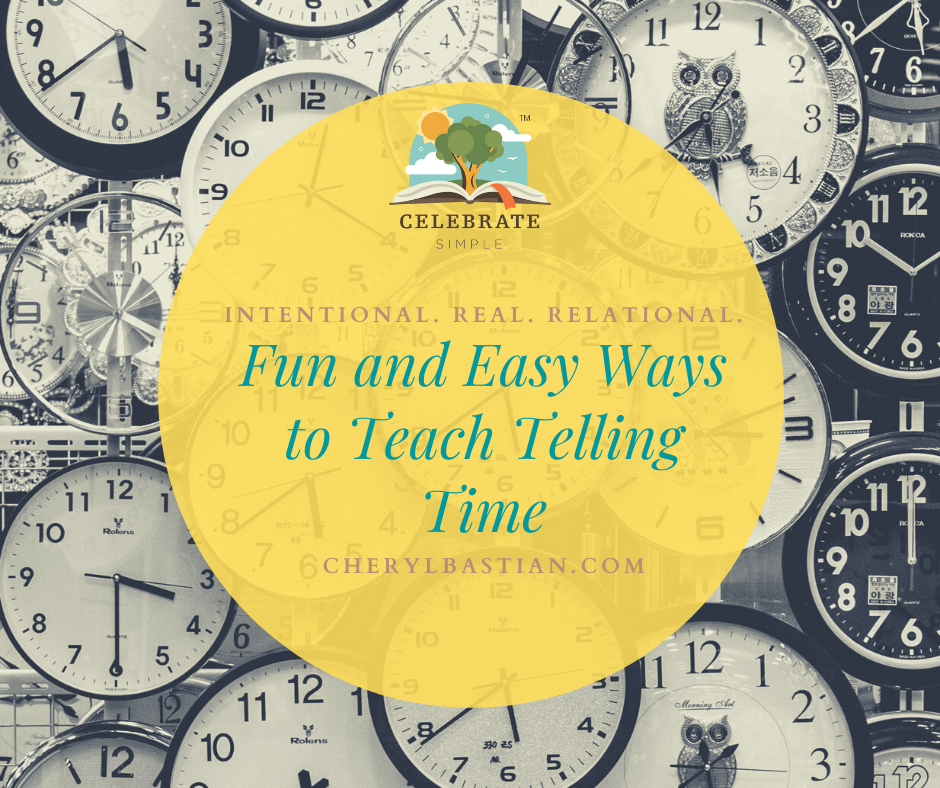Fun and Easy Ways to Teach Telling Time
/“I want to learn to tell time!”
Interest means “I am all in and listening!”
I went to find our student, geared clock purchased at an educational resource store. It’s pretty, with gears and moving hands. Littles loved it.
For this learner, making our own clock sounded like a better idea; and hence, I fostered the ownership of the idea. I smiled, knowing if we worked together on the project, there would be greater, meaningful buy in.
Relationships matter.
I chose a dinner plate from the kitchen cabinet, turned it upside down on cardstock, and traced.
My little learner couldn’t wait to cut along the pencil line.
Next, we searched our sticker collection for numbers, big ones! It wasn’t long before we found them and my little learner eagerly placed them on the freshly cut out clock while I cut out the hands and found a brass brad in the junk drawer. She colored the hands by the time I made it back to the table.
Since our initial introduction to and exploration with the clock, many fun impromptu lessons have blossomed, first learning to tell time to the hour, then the half- and quarter-hour, and finally, minutes. She loves moving the hands to match a given time. To encourage the connection to symbolic representation, I have her use the hands to show the time and then ask her write the time on paper, modeling one or two examples first. We’ve also used the clock to practice counting by five. Our homemade clock has been a welcomed learning resource, and we’re very proud of our crafty accomplishment.
Materials
A dinner plate
Number stickers
Minute hand, cut out of cardstock
Hour hand, cut out of cardstock
Beyond the Paper Clock
It’s important for children to learn to tell time on both analog and digital clocks and watches. With this in mind, we’d purchased our little learner a fun watch, which she picked out among the masses available. Though she was curious about it and about time, the real “need” to know wasn’t strong enough to foster the learning of the concept…at that time. However, when the interest resurfaced, I encouraged.
Investigate other ways to keep time: water clocks, cuckoo clocks, egg timers, grandfather clocks, pendulum clocks, alarm clocks, and stop watches.
Search for clocks in use in public places. This can be a fun way to pass time while waiting in line.
Use the stop watch on your phone to internalize Elapsed time. Children need to know what a minute (or five and thirty) “feels” like, and elapsed time is a hard concept for children to understand. Stopwatches help master the concept. This new found time tool will add spark to afternoon doldrums. Try timing
cars going down a ramp,
family members running around the block,
the length of time it takes to boil water, and
relay races.
Use an egg timer to brush teeth.
Read picture and non-fiction books about time (extensive list in my book, Cultivating Curiosity)
Hearing the excitement, “I want to learn to tell time!”?


















































